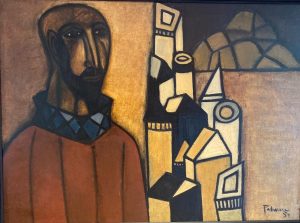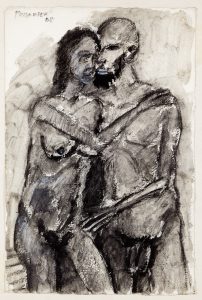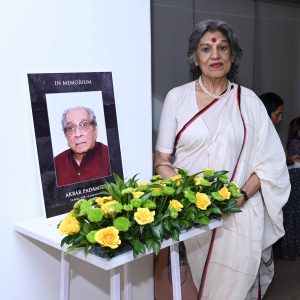A life lived: Akbar Padamsee
A tribute to the modern master Akbar Padamsee through his last exhibition in Mumbai that opened two days after his sad demise – a legacy traced through a high court verdict
Team AI
We all stand witness to history. But very few among us get to make history, have our names go down as the change-makers who revolutionise an era. The ones who do, not only carry the burden of truth, but also the burden of inspiring an entire generation. Artist Akbar Padamsee, one of India’s most famous modern masters, was one of those few.

Born on April 12, 1928, Padamsee took to art at the early age of four when he started copying images from The Illustrated Weekly of India magazine in his father's accounts books. He later went on to graduate from Mumbai's Sir JJ School of Art; and in 1951, he moved to Paris with fellow painter S.H. Raza, where he set up a small studio in a rented hotel room. Throughout his illustrious career, Padamsee, a master colourist and a pioneer who explored multiple mediums, remained true to his expression and his passion for experimentation. His moment in history, however, came in 1954, when on his older brother’s advice, he returned from Paris for his debut solo show at Mumbai’s Jehangir Art Gallery. Padamsee was charged under Section 292 of the Indian Penal Code (IPC) for two paintings – Lovers 1 and Lovers 2 – that were part of the show. Both paintings showed a man’s hand on a woman’s breast. Labelled ‘obscene’ and seized by the police, a defiant Padamsee’s fight culminated in a landmark court case, where he was eventually acquitted upon testimonies from M.F. Hussain and art critic Rudolf von Leyden.

That moment in history was revived at Priyasri Art Gallery in Mumbai that recently inaugurated the exhibition Judgement in the Trial of Akbar Padamsee. The story is retold by arts journalist Reema Gehi Desai using original archival material (diary notes, court judgements, newspaper clippings, police correspondence and letters) that were meticulously documented by Padamsee’s sister-in-law, Shahbibi Padamsee. One of the highlights of the show was a short theatrical performance, directed by his nephew Quasar Thakore Padamsee, which showcased important vignettes of the year-long trial. Stepping beyond traditional exhibitions, the show included a video-projection of Lovers 2 along with another original work – Man in Cityscape – that incidentally was featured on the invite of Padamsee’s debut show in 1954.

Opening two days after Padamsee’s death, Judgement in the Trial of Akbar Padamsee, put together with the support of Padamsee’s wife Bhanu Padamsee, looked into a seminal moment in the artist’s life that ended up defining not just an artistic practice, but an entire nation’s approach to modernism. A fitting lesson in persistence, it was gallerist Priyasri Patodia who put it best when she said, ‘The show must go on. Akbar, I feel would’ve liked that’.
